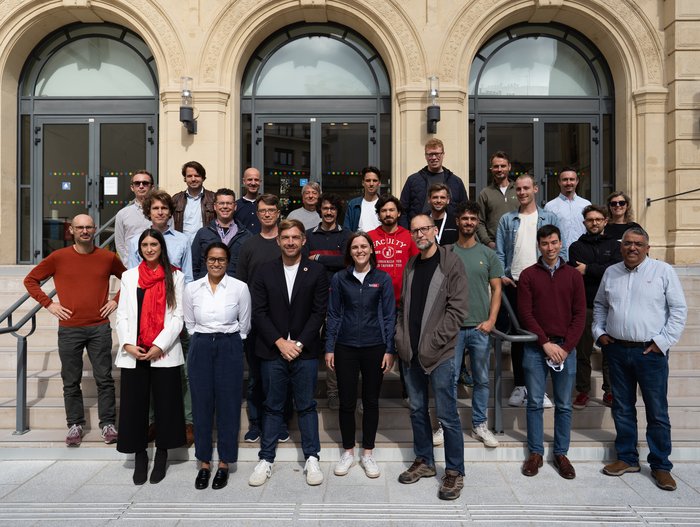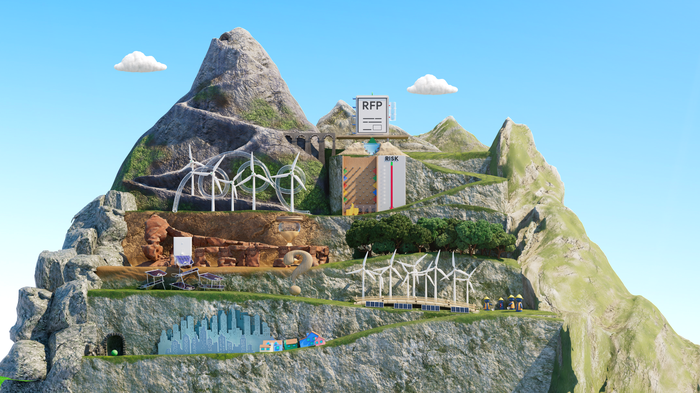Live from COP26: A cloud’s eye view
Chris Talbott
Cloud Sustainability
Try Google Cloud
Start building on Google Cloud with $300 in free credits and 20+ always free products.
Free trialEditor’s note: Another year, another COP. To stay up to date on Google Cloud’s news and musings from COP27 in Sharm El-Sheikh, Egypt, mosy over to our COP27 living blog.
At Google, we’re keenly invested in preventing the worst effects of climate change, and helping our customers use Google Cloud technology to build a more sustainable future. We’re watching with interest the goings on at the 2021 United Nations Climate Change Conference, or COP26, when representatives from countries and organizations around the world - including Google Cloud - will gather for the first two weeks in November in Glasgow, Scotland for the latest round of climate talks. Bookmark this blog as Google sustainability experts bring their perspective on developments discussed there as they pertain to cloud computing. Catch the event for yourself on Youtube and Google Arts & Culture.
COP26 is a wrap so let’s get solving
Monday, November 15, 2021
Chris Talbott, Cloud Sustainability Lead
This past weekend the Glasgow Climate Pact was signed, keeping the possibility of limiting global warming to 1.5 degrees alive. Over 200 countries signed the agreement, which builds on progress made throughout the event on curbing deforestation, reducing methane emissions and accelerating the transition to carbon-free energy.
As we look out, it’s clear that collaboration between governments, the private sector, activists, creators and youth leaders will be key to achieving a more sustainable future. The message at COP26 was so powerful because of the diverse set of voices sharing it, and the urgency behind their message.
For our part, we had fun at COP26 bringing an array of perspectives, sharing onsite learnings, customer best practices and technical solutions for climate change. Over the course of two weeks, we published 6000+ words in 11 posts from climate scientists, CTOs, developers, marketers and technical directors. To save you the scroll time here are all our blog posts from COP26:
- Invest in nature to win on climate change - Jen Bennett, Director, Office of CTO, Google and Nithya Sowrirajan, Director, Global Solutions, Google Earth and Earth Engine
- A global data commons can empower local climate decisions - Jason Hickey, Software Engineer
- The role of the private sector in scaling clean energy solutions - Amanda Peterson Corio, Head of Data Center Energy Development, Google
- How climate scientists are using cloud computing to predict the future of our planet - Tricia Davis-Muffett, Director, Public Sector Marketing, Google Cloud
- Developing apps that support our natural world - Alexandrina Garcia-Verdin, Google Cloud Developer Advocate
- Can’t miss experiences from the Green Zone at COP26 - Camaryn McKenzie and Denna Nazem, Associate Product Marketing Managers, Google
- New partnerships set a course for clean energy progress - Fabien Vieau, Regional Director, European Data Center Energy and Sustainability
- Supporting the net zero agenda as technology leaders - Paul Frost, Chief Architect, Wholesale Banking Technology, HSBC
- Accelerating sustainable finance with technology - Jeff Sternberg, Director, Office of the CTO, Google Cloud
- New momentum for 24/7 carbon-free energy - Devon Swezey, Global Energy Markets and Policy Lead
- At COP26 we’ll be watching the world turn ambition into action - Chris Talbott, Cloud Sustainability Lead
At COP26, we also recommitted to our sustainability goals: driving decarbonization on a global scale, helping cities, businesses, governments and over a billion people take action on climate change. Ahead of COP26 we made our own net-zero announcement, extending our operational sustainability commitments. We also published our 2021 impact report for Environmental Insights Explorer, outlining how we’re helping more cities take action against climate change with maps and AI. And we were proud to see 20 new signatories to the 24/7 CFE Compact, a multi-stakeholder effort organized by Sustainable Energy for All to accelerate decarbonization of electricity grids across the globe.
We’re also continuing to help Google Cloud customers become more climate-resilient and reduce their environmental impact. As we said repeatedly throughout the week, a better understanding of our planet can help businesses make the sustainable choice the more obvious choice. Last week we published a new paper with KPMG Cloud on helping financial services companies close the disconnect in environmental, social and governance (ESG) data. With a better understanding of ESG data the industry can help mobilize finance towards more sustainable investments. The same can be said for industries like retail, manufacturing and CPG, some of whom are already using earth data to better manage natural resources.
Coming home from Glasgow we’re more inspired to apply Google Cloud technology to the toughest climate challenges our customers face. With our nations’ collective global targets in place, and an explosion in individual commitments for businesses, it’s time to get solving.
Invest in nature to win on climate
Friday, November 12, 2021
Jen Bennett, Director, Office of CTO, Google Cloud, and Nithya Sowrirajan, Director, Global Solutions, Google Earth and Earth Engine
It was 11 years ago at COP16 that we unveiled Google Earth Engine, an earth observation platform that combines a multi-petabyte catalog of satellite imagery and geospatial datasets with powerful analysis capabilities. And for over a decade now, scientists and researchers have used it to detect changes, map trends, and quantify differences on the Earth's surface.
When you observe the Earth’s surface over the past few decades in Google Earth’s Timelapse, the immensity of the change to our natural environment is arresting. It’s becoming increasingly clear that we not only need to adapt to protect vulnerable communities and natural habitats against this change, but that we also need to look to nature as a regenerative solution—not just something that we need to protect, but something that will protect us.
During these past two weeks at COP 26 world leaders committed to averting the worst consequences of climate change. Day two of the World Leaders Summit focused on the role of nature in climate action, with forests taking center stage. 133 countries signed an agreement to reaffirm commitments to sustainable land use, and to the conservation, protection, sustainable management and restoration of forests, as well as other terrestrial ecosystems.
In our experience working with NGOs like World Resources Institute to develop tools such as Global Forest Watch, technology is critical to monitoring changes to and protecting the forests that we’re depending on to mitigate climate change. A proliferation of satellites and sensors enable us to better understand different types of changes like land coverage or surface water, with increasing resolution. Increasing the frequency of imaging provides us with timely understanding of changes in the Earth’s forests, landscapes, icescapes, and coastal waters. Together with technical partners who develop methodologies and share best practices, this data and more insightful tools can help us make faster—and better—decisions to manage these resources responsibly.
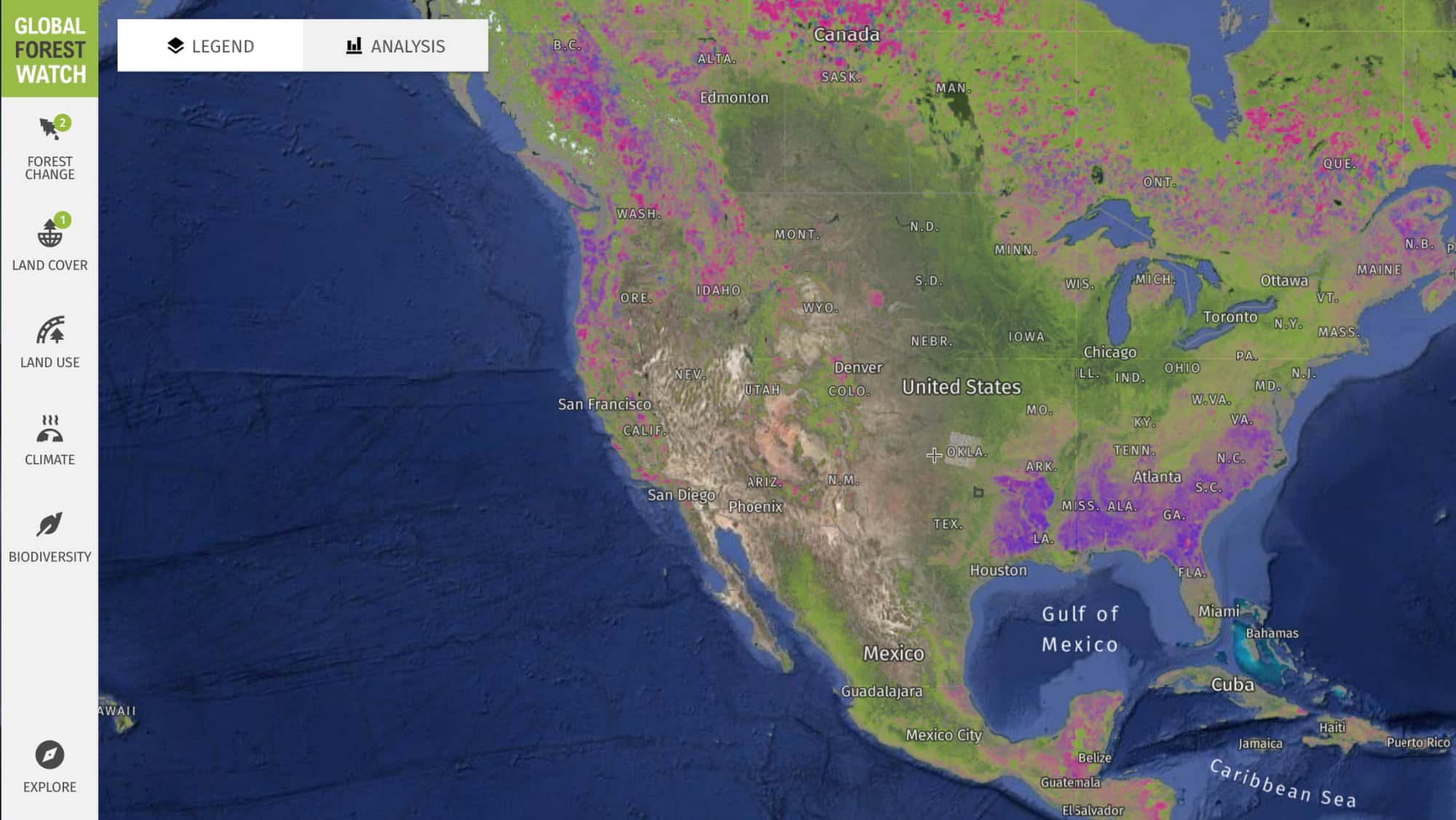

Global Forest Watch provides interactive maps to view and analyze forest change.
Protecting forests and natural resources isn’t just a challenge for nation states. Organizations across the public sector and industries such as agriculture, financial services and consumer goods also need to better manage and mitigate climate risks and preserve natural resources impacted by their supply chain—and they’re using technology to do so. For example, Google Cloud and Unilever partnered to help end deforestation in the supply chain for palm oil and other commodities by 2023. Unilever is analyzing forests, biodiversity and water cycles that intersect their supply chain, leading to greater accountability and enabling them to better detect deforestation and prioritize areas of forests or habitats in need of urgent protection.
On Saturday, Unilever premiered an IMAX video at COP26, In Our Nature. In the session that followed, We cannot win on climate without winning on nature, Unilever Chief Supply Chain Officer Marc Engel spoke about the game-changing ability of being able to see what is happening on the ground, on farms and mills in almost real time, and how that helps them make commodity sourcing decisions. Google also participated on the panel, explaining how the new datasets and methodologies that Unilever is using are widely applicable across industries, and our work with the ecosystem to create trustworthy standards.
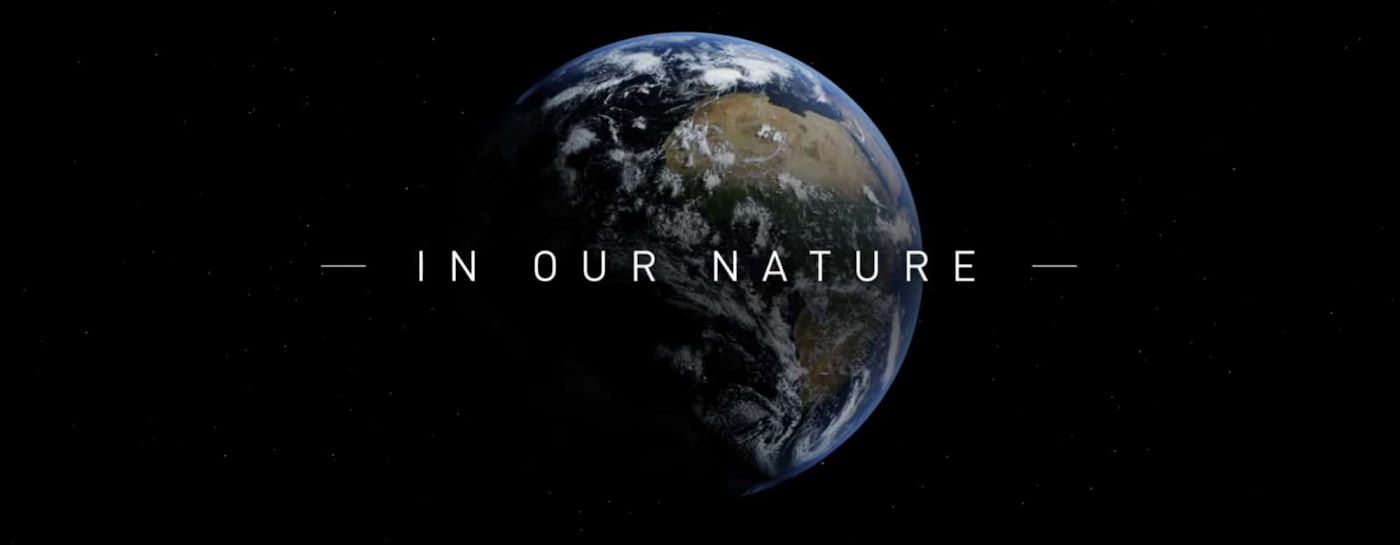
All this is leading to bold commitments, collaboration and collective action. Last week, USAID announced the Forest Data Partnership between the World Resources Institute, Unilever, Google, NASA, and the United Nations Food and Agriculture Organization to address a key barrier to private investment in forests and restoration: the lack of reliable and accessible data on forests and lands. The partnership will focus on key geographies including the Amazon Basin, Southeast Asia and West Africa.
No one can tackle climate action and nature preservation alone, we are humbled to collaborate with our partners and the ecosystem. Collaboration starts with rich data from both public and commercial providers, and is enhanced by the presence of a collaborative platform. With Google Earth Engine and Google Cloud, we’ll continue to bring together researchers, scientists, NGOs and commercial entities to establish best practices for a shared understanding. By working in collaboration, we can win on nature together.
A global data commons can empower local climate decisions
Thursday, November 11, 2021
Jason Hickey, Software Engineer
Here at COP26 one thing is clear: the race to global net zero in the next 30 years will be one of the largest transitions humanity has ever faced, and it will be an all-hands-on-deck effort that includes governments, the private sector, academia, as well as creative individuals. This will be a Herculean effort for the planet. The financial sector is mobilized, and opportunity is knocking.
As efforts to address climate change accelerate, climate justice will be critical. Climate impacts are not borne equally, and we must work together to ensure a just transition to a better future for present and future generations. In order to achieve that we’ll need to focus on information equity — the equal access to environmental data — and the development of the global data commons — data about climate and energy, as well as a framework and governance principles for using it.
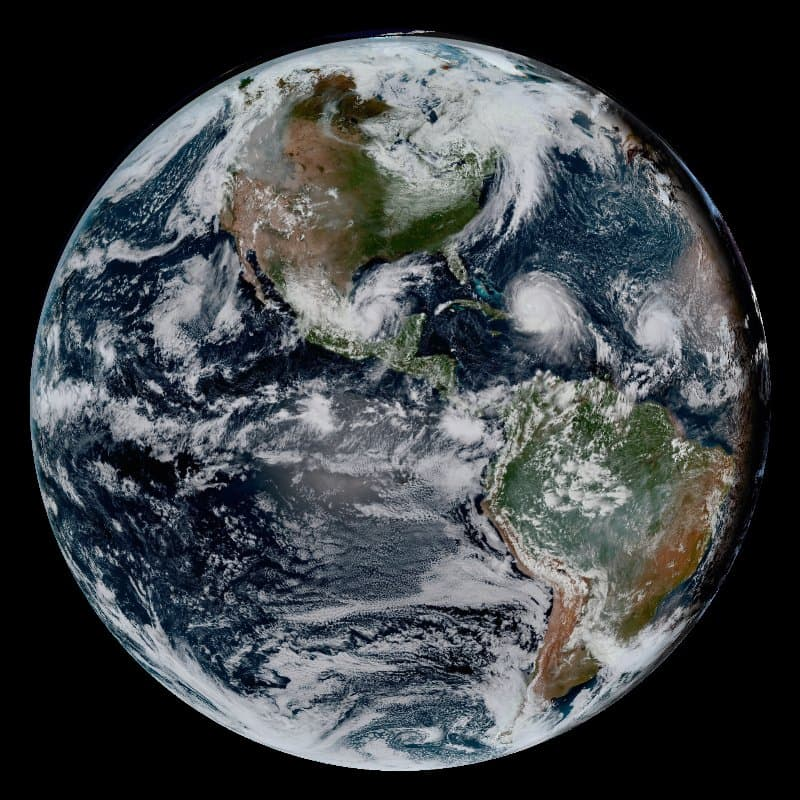

View from the GOES-16 geosynchronous weather satellite using the NOAA/NESDIS GOES image viewer
I work in the atmospheric sciences, weather and climate modeling, fields that have an unprecedented amount of information gathered by advanced infrastructure. Hundreds of satellites circle the globe, collecting terabytes of observations every day. Sophisticated weather and climate models make predictions and forecasts ranging over hours, seasons, or even centuries.
This infrastructure was created principally through publicly funded governmental organizations in the developed world, like NOAA, NASA, ECMWF, the Met Office, and others. This data is enormously valuable in making predictions for climate change such as the IPCC interactive atlas or the WMO climate dashboard that helps advise countries on specific actions to combat climate change.
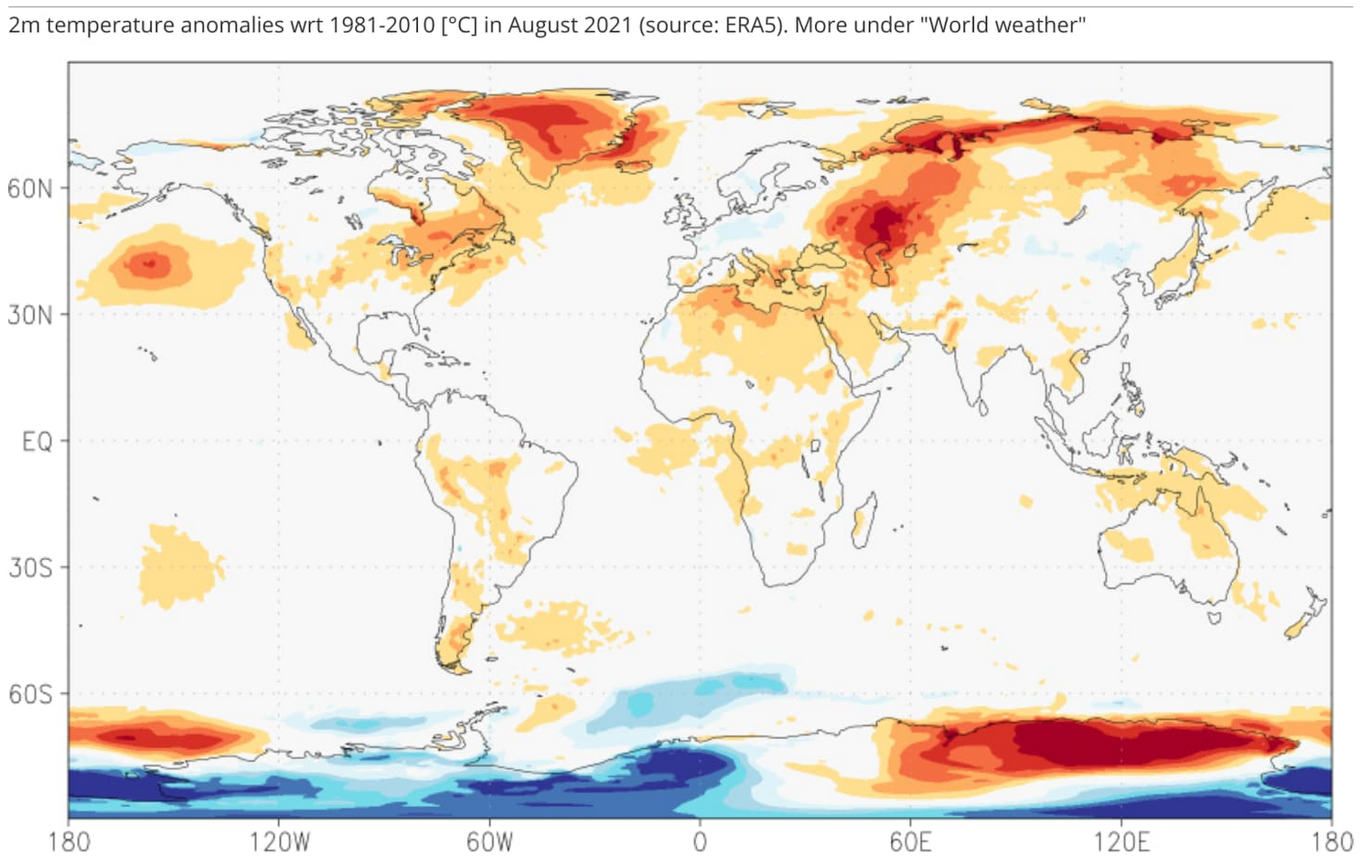

WMO Climate Dashboard showing temperature change since 2010
For instance, in my research team focused on weather and climate modeling we apply AI models to this data to make high-resolution local weather forecasts. This is an example of how public data can be used directly to inform local decisions.
The natural extension of these ideas is toward the creation of a global data commons and Open Science, where data, methods, and platforms are accessible and usable by all communities, anywhere on Earth. Of course, this is not just for weather and climate data, but also for the financial and accounting tools that can be used to manage and track carbon. Open platforms, open data, open science empower local decision-making and global consensus, and empower the vast amount of human ingenuity and creativity worldwide.
Cloud platforms are a key part of this vision, supporting globally available data and compute services. Fortunately, strong investments in sustainability by cloud platform providers (including Google Cloud’s zero-carbon commitment) mean that open science and information equity are environmentally sustainable, allowing global collaborative communities to flourish.
As we enter the critical decade to address climate change, COP26 demonstrates enormous alignment and commitment across sectors, and a readiness to act. It is time to leverage open platforms that provide the infrastructure for action and fully support information equity and global collaboration.
The role of the private sector in scaling clean energy solutions
Wednesday, November 10, 2021
Amanda Peterson Corio, Head of Data Center Energy Development, Google
Yesterday, I was honored to participate on a panel at the Bloomberg Green Summit at COP26 focused on overcoming hurdles to scaling clean energy technologies. Earlier in the day, U.S. Special Presidential Envoy for Climate, John Kerry, spoke to the audience about the negotiations at COP26 and why success at Glasgow is so critical to accelerating climate mitigation. Among other key issues, he pointed to how the private sector is driving clean energy solutions, and is making ambitious commitments and investments to help scale nascent technologies across many different types of industries, from maritime shipping to aviation and advanced carbon-free electricity technologies.
Making these kinds of advanced market commitments to purchase clean energy technologies can play an important role in signaling market demand that provides confidence to investors and suppliers to scale up new technologies. That’s a role that Google is actively seeking to play as part of our 24/7 Carbon-free Energy (CFE) goal. As I described on my panel today, we will continue to buy much higher volumes of mature clean energy technologies like wind and solar, but we also need to look at how we can support other clean energy solutions — such as energy storage, carbon capture and storage technologies, green hydrogen, advanced nuclear, and others — to complement wind and solar as we seek to fully decarbonize our electricity consumption on every grid we operate by 2030. We’re particularly excited about the promise of next-generation geothermal technology, which we are piloting with a technology partner in Nevada.
Another theme in the conversation was that, in order to enable the private sector to play this role, policy is critical. I shared our experience in Taiwan where, until 2017, it was not possible for any company to purchase renewable energy directly and add it to the grid. We worked with other partners and the Taiwanese government to update their regulatory framework to make it possible to do so, and shortly thereafter we signed the first corporate power purchase agreement (PPA) in Taiwan’s history. Later, that enabled Taiwan Semiconductor Manufacturing Company to sign the largest PPA ever, for a 920 MW offshore wind farm in the country.
We know that Google alone can’t solve these challenges. Building coalitions for policy change will be key to driving clean energy adoption across the globe. That’s why we were thrilled to join the new Clean Energy Demand Initiative (CEDI) to open new opportunities for clean energy purchasing across the globe. It’s also why we helped launch the 24/7 CFE Compact, to make it possible for more companies, organizations and governments to advance toward 24/7 CFE and accelerate the decarbonization of electricity grids across the world.
How climate scientists are using cloud computing to predict the future of our planet
Tuesday, November 9 2021
Tricia Davis-Muffett, Director, Public Sector Marketing
As world leaders debate policy measures at COP26, leading scientists are harnessing the power of the cloud to better understand how the Earth’s climate is changing.
With cloud computing, scientists run parallel computations on intuitive, scalable, and cost-effective infrastructure, which is crucial for analyzing the massive datasets of climate science. The more data climate scientists can collect and analyze, the better their predictions can be — and the sooner we can develop solutions.
With Google Cloud, researchers around the world are developing new tools to do this collaboratively, and sharing them so policy-makers can access them too. Here are some examples of these innovative projects:
At Columbia University, researchers used Google Cloud to build Pangeo, an open-source data toolkit to store and analyze the three-dimensional, high-resolution datasets of climate sciences. They are now building Pangeo Forge to crowdsource and automate the creation of cloud-optimized big science data and further facilitate sharing and collaboration.
At CalTech, researchers at the Climate Modeling Alliance (CliMA) are developing ClimateMachine, the first climate model to integrate the massive amounts of observational climate data collected from space and the ground with targeted high-resolution simulations. This is especially important for data that are not easy to measure and represent, like low-lying cloud strata. By running the simulations on Compute Engine, they improved the model’s accuracy and reduced uncertainty in planning for extreme events like hurricanes.
At Natural Resources Canada (NRCan), researchers are supporting sustainable development in Canada’s natural resource sector. By partnering with Climate Engine, a Canadian company using geospatial AI tools, and using Google Earth’s satellite data, they are delivering actionable insights to the public sector. Then, by tracking changes in ecosystems, disease vectors, water availability and quality, soil health, growing seasons, air pollution, and more, NRCan and Climate Engine can improve decision making on climate action policy and help support climate resilience.
These examples of climate scientists using Google Cloud to share data and improve their predictions are just the tip of the iceberg of how our technology can help fight climate change. For more, check out the resources below.
Related resources
Read this article about Pangeo and “the Case for Cloud in Science.”
Listen to CliMA scientists explain how climate models work
Watch this video introducing Climate Engine
Developing apps that support our natural world
Monday, November 8, 2021
Alexandrina Garcia-Verdin, Cloud Developer Advocate


At COP26, the focus thus far has largely been on reducing carbon emissions — and rightfully so. But today’s theme of Adaptation, Loss and Damage has particular meaning to me.
Working at Google Cloud, I’ve witnessed how technology and data can help us solve complex social and environmental challenges especially in two major areas:
1) Assessing and quantifying changes caused by human activity on the Earth and course correct (ex: timelapses of satellite imagery or auto-classifying images to detect carbon emissions).
2) Creating and adopting the next generation of Earth-aligned solutions that improve systems of infrastructure and exchanging of goods (ex: sensors to support regenerative farming or supply chain apps that label the climate positive impact a good or service has; promoting biodegradable materials or circular systems of reuse).
As a Developer Advocate, I build and share how-to technical content to show customers how to use our tools. In that capacity, for Earth Day 2021 I created a YouTube mini-series called People and Planet AI that helps create paths for developers interested in using machine learning or big data to build meaningful apps via real life examples.
The first episode of this technical series is on WildlifeInsights.org, which is an amazing free web app that anyone with an internet connection can use to search or upload photos to a global wildlife database to train machine learning models that auto-classify photos of animals taken by research cameras. In this vein, my peers and I designed a getting started sample for building an animal classifier on Google Cloud.
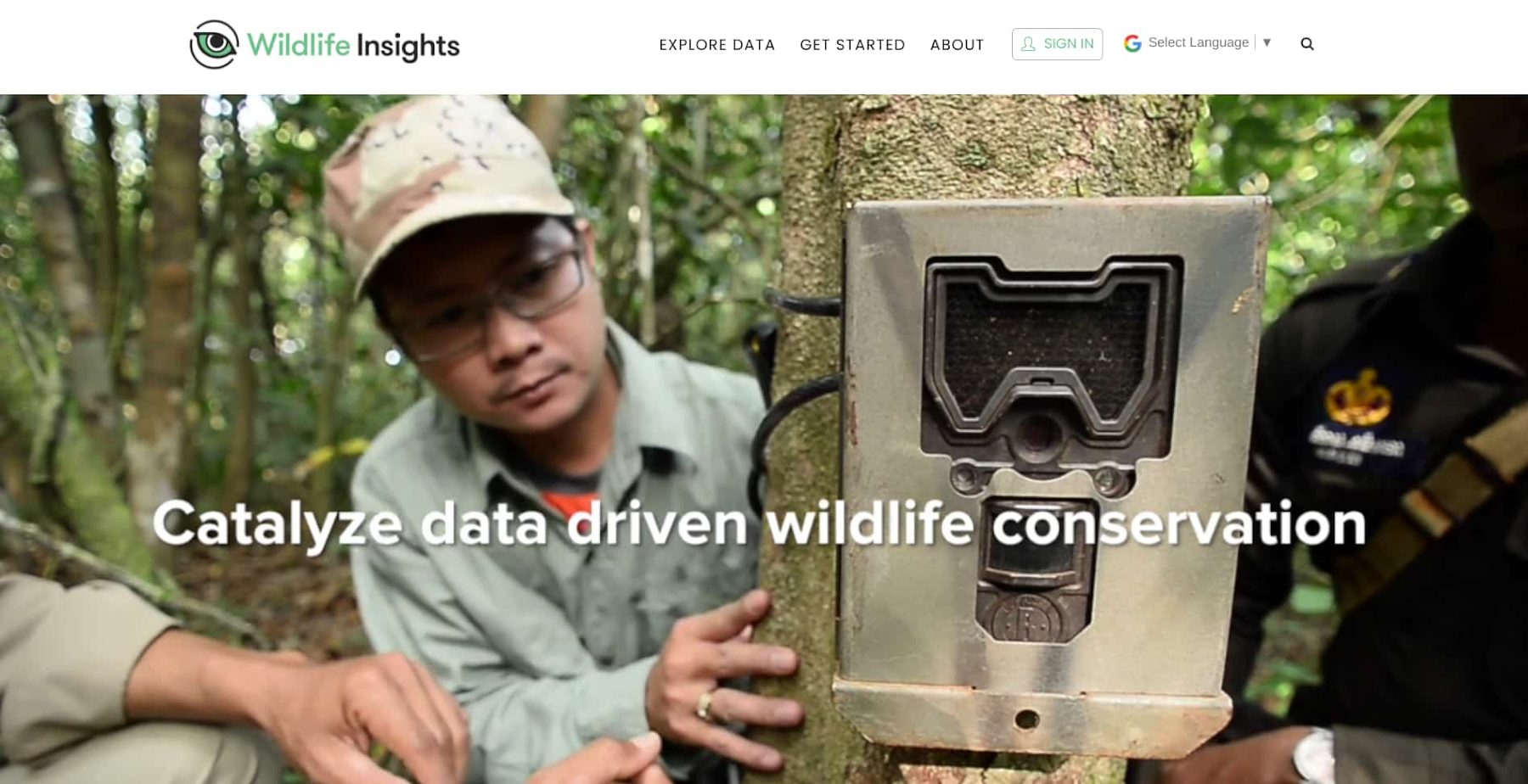

Our second episode was on GlobalFishingWatch.org, another beautiful machine learning project that helps track vessels from illegal, unreported, and unregulated fishing. Our beginner sample teaches you the data transformations performed and the model creation process for building a time-series classification. It uses GPS vessel data and manually labeled data to predict whether or not a vessel is fishing based on their distance from shore, direction, lat/long, speed, etc.
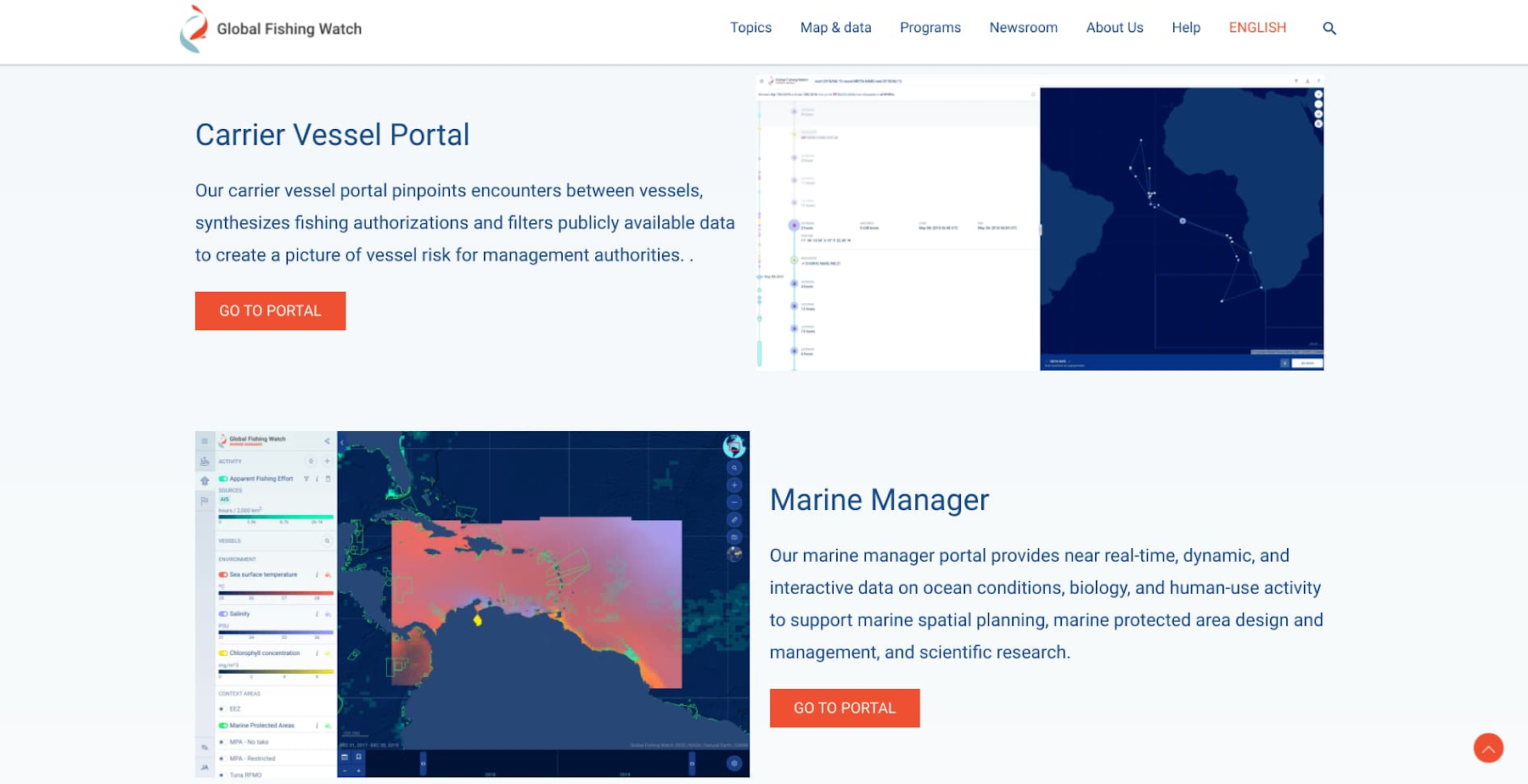

Thanks to Google’s 20% employee policy, which enables employees to spend 20% of their time on projects outside of their core job, I also work co-organizing a grass-roots group called Anthropocene that matches Googlers with internal climate products, research, or hardware. The goal is to accelerate the creation of climate solutions by connecting talented people to different problems.
This climate solutions startup community is intentionally a safe and positive space, made up of passionate people with a wide spectrum of technical, science, environmental, or organizational backgrounds. They each choose the skills they wish to offer, ranging from project management, UX, marketing, partner management, software engineering, technical documentation, analytics, etc.
I believe open data and documentation is the way to scale climate solutions with urgency.
I turn to open source practices because they are at the end of the day contribution frameworks that enable perfect strangers to work together to solve complex issues. And when it comes to climate solutions, we benefit from global participation to design for regional needs. As such, documenting, recording, or summarizing how to build a solution (as accessibly possible), is key to enabling others.
It’s also equally important for organizations to continuously share data to help build models that have sufficient information to train them.
My next 20% work will be focused on externalizing the program management learnings we have gathered from operating our 20% climate startups program. The goal is to share new frameworks for organizations in any industry to build internal climate solution programs by leveraging employee talent as well as the organization’s strengths/resources.
Thanks to data and machine learning, today we can understand our natural world with far greater richness than ever before — by orders of magnitude more. I am personally very motivated to see climate solutions grow exponentially, and look forward to inspiring technologists to apply their skills to our natural world.
Can’t miss experiences from the Green Zone at COP26
Friday, November 5, 2021
Camaryn McKenzie and Denna Nazem, Associate Product Marketing Managers, Google
As part of a generation that is deeply passionate about climate justice and protecting the planet, we treat our role as Google marketers as an opportunity to amplify voices, generate awareness for technology solutions and build influential and creative content around sustainability. This week we’ve been exploring COP26 through Google Arts and Culture’s Green Zone — a space for youth groups, civil society, academia, artists, and business to host events, exhibitions, cultural performances, workshops and talks that are online and accessible to all. We want to invite you to explore the Green Zone, watch live streams straight out of Glasgow, and even virtually walk through the exhibits in a 360 space!
There is a LOT of outstanding content available, but we were especially drawn to some of the creative solutions presented by climate leaders to combat global warming. Here are the top three sessions we think you can’t miss:
1. Reimagining Museums for Climate Action: What if Indigenous lands were thought of as a kind of museum for climate action?
The UN launched the “Reimagining Museums for Climate Action” design competition in May 2020, and is now showcasing eight of the 250 proposals at COP26. This article allows you to explore the exhibits online, showcasing ideas on how museums can become catalysts for climate action. One project we found particularly interesting was the Natural Future Museum, which celebrates and protects Indigenous communities who have historically lived in harmony with their natural environments. The exhibit includes a short film highlighting one community that is doing just that.
“The relationship between museums and Indigenous groups is often problematic, as museums have deprived them of their cultural heritage. What if we thought of Indigenous territories themselves as a new kind of museum, where forests and peoples’ ways of life can be sustained?” - Natural Future Museums, Reimagining Museums for Climate Action
2. Climate visuals: Visualising Climate Change
Climate Visuals, in collaboration with TED Countdown, is releasing 100 photographs selected from a pool of 5,500 unique submissions. Each of the photos is a combination of illustrative and impactful, showcasing climate solutions in tandem with the global impact of climate change. This initiative is intended to produce an accessible collection of evidence-based photos that document the reality of climate change across the globe.
“How we articulate the impact of climate can make or break public opinion, and the ripple effect is seen throughout culture, business, education, media, and more.” - Climate Visuals
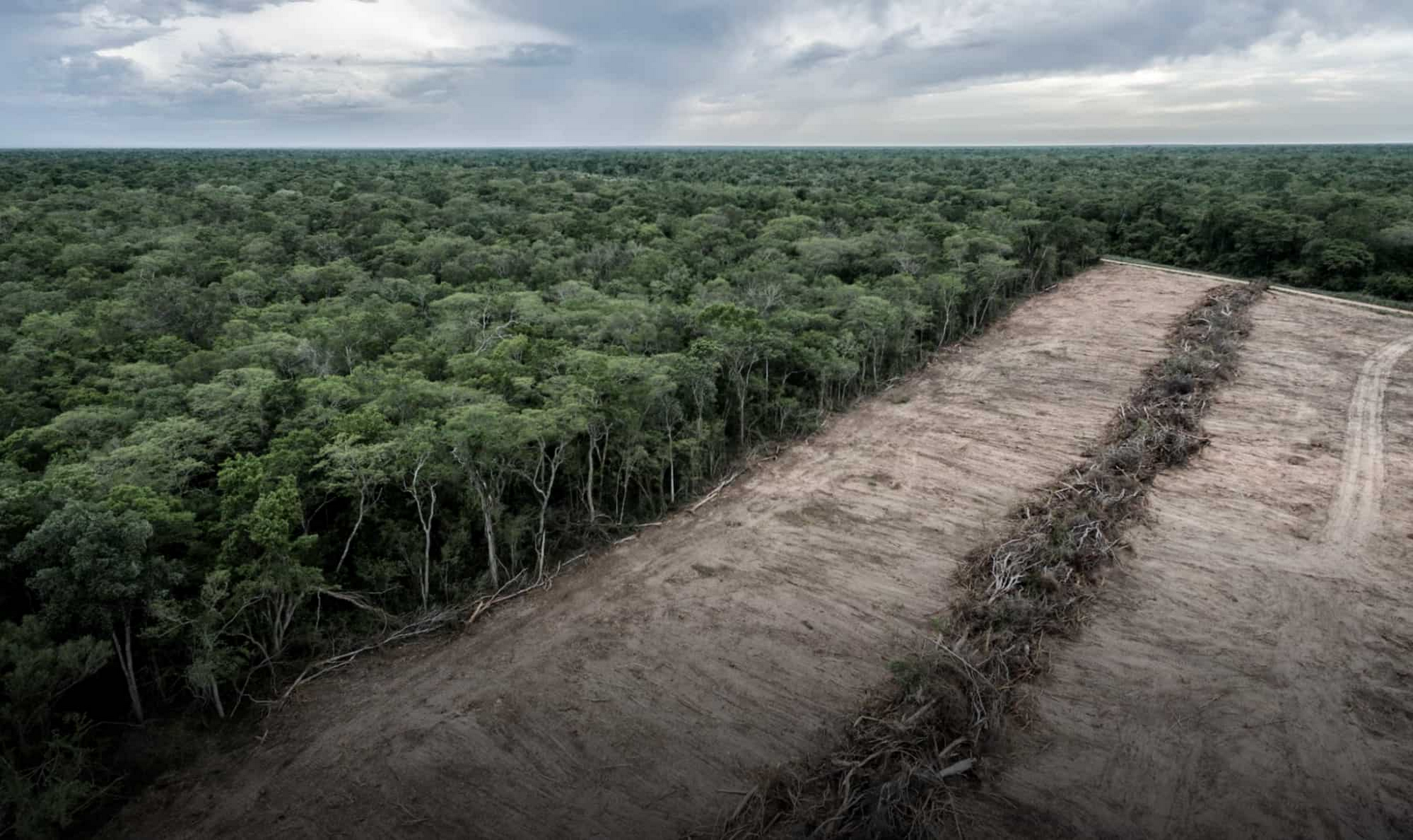

Aerial view of systematic deforestation in a Bolivian national park, bare strip of ground among forests. Marcelo Perez del Carpio / Climate Visuals Countdown, 2020-11-26.


Men working to drive in posts to retain soil embankment on the coast from erosion by high tides. Debsuddha Banerjee / Climate Visuals Countdown, 2017-07-08.
3. The Frontlines: Step into the Reality of Climate Change
The Biosphere Virtual Reality exhibit The Frontlines transports viewers to the frontlines and realities of the climate crisis, and out of the comfort of Glasgow (or their computer scenes). We think the power of VR and immersive video really shines through this exhibit, bringing in the voices of the most underrepresented populations, who are being hit the hardest by climate change, directly to the COP26 stage. Through showcasing three moving case studies, the exhibit clearly highlights how, while it is important to work together towards solutions for the future, the reality is devastation has already arrived.
“Women and young people in the Global South are already being hardest hit by the climate crisis. Extreme weather patterns — caused by rising global temperatures — are destroying lives and livelihoods, and displacing millions of people from their homes… step into the reality of climate change and be transported from the comfort of Glasgow to the places already being devastated by the effects of climate change: Kiribati, Morocco and Ethiopia.” - The Frontlines, Biosphere Virtual Reality
What Green Zone content resonated most with you? Join the climate conversation with #GoogleSustainability and @GoogleCloud.
New partnerships set a course for clean energy progress
Thursday, November 4, 2021
Fabien Vieau, Regional Director, European Data Center Energy and Sustainability
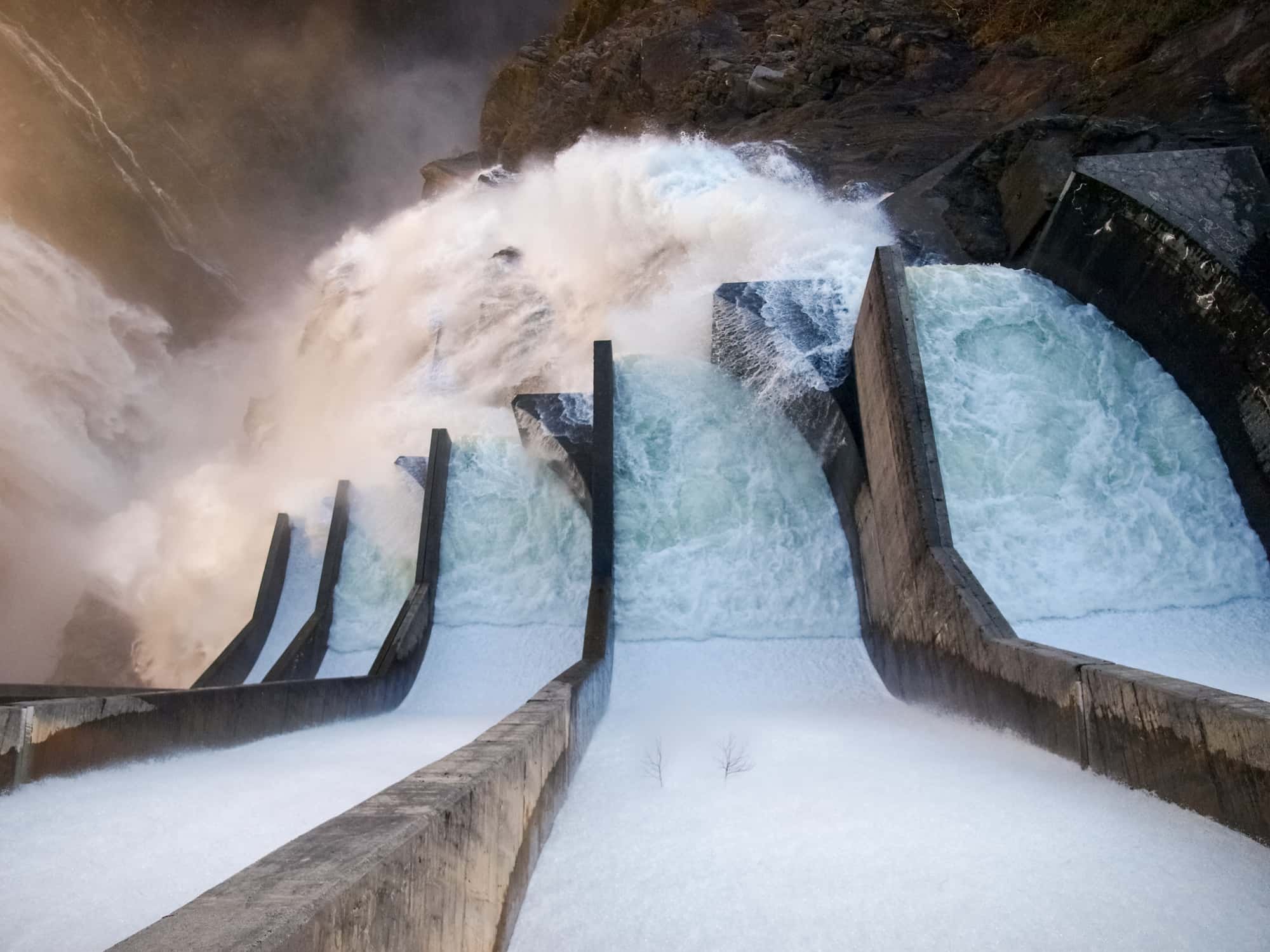

While national pledges to reduce carbon emissions tend to make the most news at climate conferences like the one this week in Glasgow, it’s new policy and investment partnerships that will be key to making near-term progress in transitioning the globe to cleaner energy sources. And by that measure, the first week of COP has already included a number of important announcements that will help move us faster toward a cleaner energy system.
On Tuesday, my colleague Devon Swezey wrote about the new 24/7 Carbon-free Energy Compact, now with 40 signatories, to enable 24/7 CFE and accelerate electricity grid decarbonization across the globe. Today, I was pleased to represent Google as it officially joined the Clean Energy Demand Initiative (CEDI), a new effort coordinated by the U.S. government and announced today by Special Presidential Envoy for Climate John Kerry. The CEDI fosters collaboration between corporate clean energy buyers and governments across Asia, Latin America, and Africa to scale clean energy purchasing and support national climate goals. Google has long been a leader in clean energy purchasing, helping to found organizations like the Renewable Energy Buyers Alliance in the U.S., Re-Source in Europe, and working to open the market in Taiwan to direct clean energy purchasing. The CEDI is an exciting new partnership to expand these successes to new geographies.
In addition to these initiatives, a number of other notable efforts were launched to support the growth of clean energy across the globe. These include:
A new Green Grids Initiative, launched by the UK and India, which seeks to accelerate the development and deployment of interconnected electricity grids across continents, countries, and communities.
The Global Energy Alliance, a new fund to accelerate and scale equitable energy transitions in low- and middle-income countries, which aims to raise $100 billion in public and private capital to expand access to clean electricity for 1 billion people.
The First-Movers Coalition, which organizes commitments by companies to purchase low-carbon products to create new markets for technologies that will be needed to reduce emissions across hard-to-abate sectors like aviation, shipping, and cement.
One important lesson coming out of COP26 is that partnerships and collaboration between the public, private, and NGO sectors will be key to driving the adoption of clean energy at the pace and scale necessary to mitigate the worst consequences of climate change. It’s also clear that policy, in particular, is critical to accelerating the current momentum.
Supporting the net zero agenda as technology leaders
Wednesday, November 3, 2021
Paul Frost, Chief Architect, Wholesale Banking Technology, HSBC
As COP26 gets into full swing, I’ve started reflecting on what we as technology leaders can do to support the sustainability and the net-zero agenda. Since the turn of the 21st century we as a society have become more and more dependent on technology both in our personal lives and at work, and the push to digitise continues at pace, especially in the financial sector.
Let’s start by saying from a carbon footprint perspective this is a good thing, for almost all processes in a digitised journey will always be more carbon-efficient than the equivalent manual process. Using paper and visiting a branch by example are evidently more carbon-intensive. Having said that we must also recognise that for us at HSBC and other banks, technology is a sizeable part of our carbon footprint. So what are the levers we have to influence the size of this footprint?
There are a number of choices we can make that have a positive impact — from large decisions around hosting, through to how we manage our day-to-day activities across technology. One of the most impactful things we can do is to use the cloud. Whilst we are moving to more sustainable internal data centres, cloud providers are generally ahead of this curve as they have had to drive a high degree of efficiency to support their hyperscale demands. That, and their advances in use of green energy, puts them ahead in the goals of net-zero carbon. But cloud isn’t the only answer — we need to think about how we use the technology more broadly. Here are just some of the things we as technology leaders should consider:
Are we rightsizing our applications? – Typically utilization figures of servers are low, so would efficient use of containers and virtualization help?
We often “gold plate” solutions – does the solution warrant the size of infrastructure deployed to meet this business need?
Do systems need to be up and running 100% of the time? We typically leave infrastructure running when not in use. Do those development and test environments need to be running 100% of the time? Can we scale on demand rather than pre-provision to meet spikes in capacity demand? This is another area where cloud helps.
What about data? It too has a carbon footprint. Do we always consider the data lifecycle and have efficient processes for data archiving and deletion, or do we keep the data around – just in case?
Duplication – do we have duplicate solutions that meet a business need? Do we really need this, or would consolidation help reduce the carbon footprint?
The desktop – are we thinking about carbon footprint in our desktop? There is significant variation across desktop devices that needs to be considered. Are we considering the whole life of a device through manufacture, transport, use, and eventually decommission?
These are just some of the things we need to consider, and I am sure many people are already aware and doing this. There are more options out there, but the most important thing we can do is start thinking about the various options we have at hand, make sure we are having these conversations and challenge the carbon efficiency of our technology use. At HSBC, we are committed to achieving net zero in our own operations and supply chain by 2030 or sooner – read more here.
Accelerating sustainable finance with technology
Wednesday, November 3, 2021
Jeff Sternberg, Director, Office of the CTO, Google Cloud
As global leaders gather this week at COP26 in Glasgow, one of their top goals is to mobilize finance to secure net zero emissions and keep 1.5 degrees warming within reach. To do this, COP26 leaders are challenging all financial stakeholders to take climate into account in every financial decision.
Technology is playing a vital role in this effort. I have a background in financial services and fintech, and work in Google Cloud's CTO Office with technology leaders across financial services and other industries to transform sustainability in their organizations. Here are three technology areas that I think are vital for sustainable finance, both to manage climate-related risks and to enable new climate finance opportunities.
1. Understanding localized climate risks
COP26 leaders are calling on companies to be transparent about the risks inherent in climate change. Every business will be affected by a warming planet, and it’s critical to understand precisely how these events will affect company operations, employees’ lives, and entire value chains. As BlackRock’s CEO Larry Fink has stated, climate risk is investment risk.
However, physical risks from climate change are not evenly distributed around the world. Some areas will see increased floods, and others will face droughts or wildfires. Rising sea levels will affect coastal areas and severe winter storms will affect places with historically milder winters.
Geospatial analytics and modeling has the potential to give us a much more accurate view of these localized climate-related physical risks. The Task Force on Climate-Related Financial Disclosures (TCFD) recommends factoring the geographic location of the organization’s value chain (both upstream and downstream), as well as the organization’s own assets, into any climate change scenario analysis efforts. Using tools like Google Earth Engine and BigQuery, it’s possible to create a localized, precise understanding of climate-related physical risks for each location in the value chain.
2. Using AI to improve climate disclosure
Another key finance priority for COP26 is improving the quantity, quality and comparability of climate-related disclosures by companies, so that investors and regulators can better understand climate risks and opportunities. To date, most of this disclosure has been published as human-readable documents. One example is Google’s Environmental Report. These documents are very helpful if you’re in a position to deeply study an individual company, but what if you want a broad view of sustainability progress across markets?
This is where AI comes in. Specifically, natural language machine learning approaches can be applied to classifying and extracting structured information from sustainability disclosures. The TCFD recently used an AI approach to quantify the level of sustainability disclosure across 1,701 companies from 69 countries. A team of experts manually labeled text passages in a sample of 150 documents, assigning a “yes” or “no” value to each review question, such as “does the company disclose Scope 1, Scope 2, and, if appropriate, Scope 3 greenhouse gas emissions?”. Then they trained a model with these labels and used it to predict yes/no responses for the entire corpus. The resulting analytics were used by the task force to assess the state of adoption and level of disclosures.
Investors, regulators, and companies can all benefit from adopting natural language AI techniques to better understand sustainability documents, whether those are from suppliers, investors, customers, or even competitors. Tools like Google Document AI and Vertex AutoML can accelerate AI adoption in these organizations.
3. Collaborative sustainability data sharing
COP26 is demonstrating the power of collaboration to solve climate challenges. It’s clear that individual organizations cannot go at this alone; everyone must work together! In the financial world, companies need to share information with investors, suppliers need to share data with companies, and everyone needs to share data with regulators and central banks.
In an enterprise setting, sharing data can be difficult, involving legacy tools, slow cycle times, and one-way processes. What if sharing climate and sustainability data were as simple as sharing photos or documents in the cloud? Cloud-native tools like Analytics Hub, built on BigQuery, can definitely help here.
As a bonus, thanks to Google’s renewable energy matching, building these solutions on Google Cloud today means the net operational greenhouse gas emissions associated with your application is zero. And over time, the gross carbon footprint of these workloads will decrease as we make progress towards our goal of running on carbon-free energy around the clock by 2030.
New momentum for 24/7 carbon-free energy
Tuesday, November 2, 2021
Devon Swezey, Global Energy Markets and Policy Lead
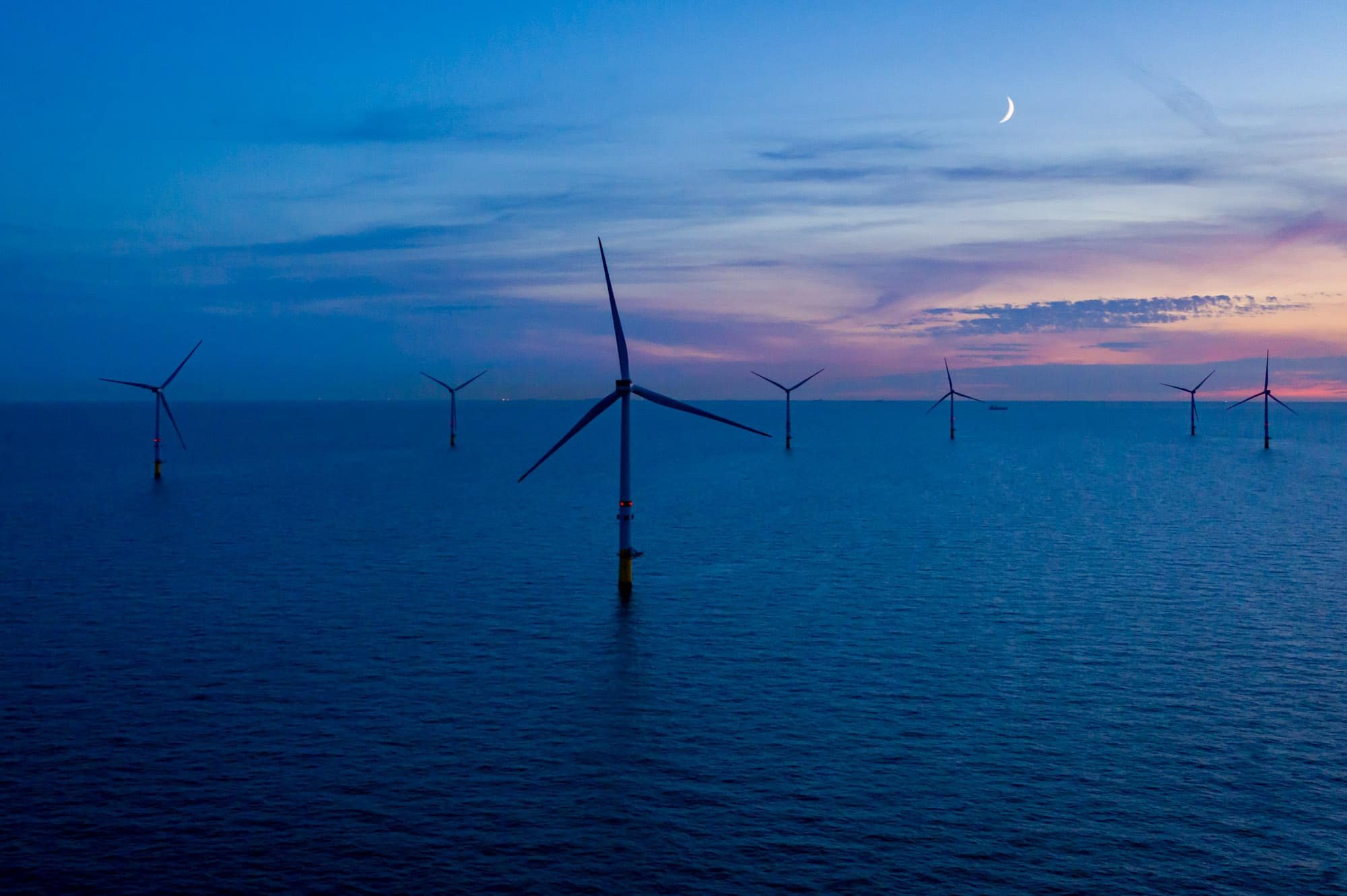

When Google announced our goal to operate on 24/7 carbon-free energy (CFE) at all of our data centers, cloud regions and office campuses across the world by 2030, we knew that reaching it would require new partnerships with governments, companies, our customers, and the communities in which we operate. That’s why it’s been so exciting to see so many companies, governments, and organizations join Google in committing to advance 24/7 CFE. including today at the COP26 conference in Glasgow.
Earlier today, I participated on a panel with leaders from X, AES Clean Energy, the government of Iceland and the city of Ithaca, New York, to discuss the 24/7 CFE Compact, a multi-stakeholder effort organized by Sustainable Energy for All to accelerate decarbonization of electricity grids across the globe. SEforAll announced that 20 new companies, governments, and organizations, for a total of 40, have now joined the Compact, which Google CFO Ruth Porat publicly launched in a speech at the September UN High Level Dialogue on Energy. In addition to the organizations that participated on today’s panel, 24/7 CFE Compact signatories include Clean Air Task Force, EDP, Engie, Johnson Controls and Orsted (you can find a full list here).
The 24/7 CFE Compact is a vehicle to focus action to go beyond the “emit and compensate” model of the past and target the complete decarbonization of electricity consumption. This is important because rapid electricity decarbonization is key to creating net-zero emissions economies; electricity accounts for 25% of global carbon emissions, but is also key to decarbonizing other sectors of the economy like transport, industry, and buildings. According to the International Energy Agency’s landmark Net Zero by 2050 report published earlier this year, to achieve a net-zero global economy by 2050 we must create zero-carbon grids even earlier (by 2040, according to the IEA) while “electricity becomes the core of the energy system.”
With the 24/7 CFE Compact, stakeholders across the energy ecosystem can help accelerate this transition, by driving progress in key areas. We’ll need more energy consumers targeting 24/7 CFE for their operations, new market and product innovations to enable around-the-clock clean power, advancements in carbon-free energy and demand optimization technologies, and major shifts in policy. We’re hopeful that COP26 proves to be a strong foundation to build upon as we work collectively to decarbonize the grids in the coming decades.
To learn more about the growing movement for 24/7 Carbon-free Energy and how you can get involved, check out: www.gocarbonfree247.com. And as Google advances towards our own 24/7 CFE by 2030 goal, we’ll continue to share our learnings and our progress, and work to help our partners and customers achieve their own decarbonization objectives. Stay tuned for more updates in this area in the weeks ahead.
At COP26 we’ll be watching the world turn ambition into action
Monday, November 1, 2021
Chris Talbott, Cloud Sustainability Lead
It’s Day 1 of COP26, where for the next two weeks, the work of nations, companies, agencies and individuals fighting climate change across the globe will be on full display.
At Google, we believe that technology is a powerful tool in that fight, and consider the environment with every product we build and every data center we stand up. We’re also partnering with governments to decarbonize their economies, improving climate preparedness and increasing climate resilience.
And at Google Cloud, we’ve been working with our customers to apply cloud technologies to the critical climate change challenges they need to meet for their business goals. In these engagements we’re focused on turning the overwhelming ambition we hear from everyone we talk to — app developers to city planners to CEOs — into real action. Which is why I’m looking forward to the next two weeks and I’m super interested in learning how other companies are tackling climate change in their industries.
For example, one of the things we’ll be on the lookout for is new ideas for using technology to help visualize and quantify climate challenges — things like this AI-generated installation, with artwork that explores climate issues like coral bleaching. Visual representations are already helping our customers make more sustainable decisions such as how to source materials more responsibly. I hope we can learn more from the creative COP26 community on how to use visuals to influence sustainability decisions.
Each day of COP26 has a theme — from finance to energy to cities — which is sure to bring new commitments from the leading, sustainable companies in each industry. Whether its pricing climate risk into financial assets, last-mile efficiency in logistics or infrastructure decarbonization, individual industries all face unique sustainability challenges, have unique goals, and require unique technology solutions to achieve them. For our part, Google shared a new net-zero commitment across our value chain heading into COP, and I’m looking forward to seeing all the new targets being set and progress that companies are making.
We’ll also be listening to the experts on how we can avert the worst consequences of climate change. The challenge is immense but change can start with small decisions all of us make. Keep us bookmarked and check back with us often to hear perspectives from onsite in Glasgow and from climate and industry experts across our teams who are working on making the sustainable choice the easy one.
